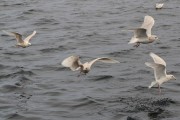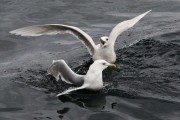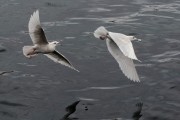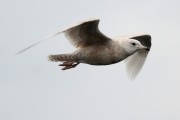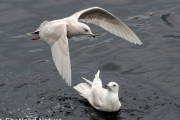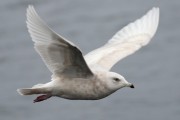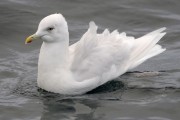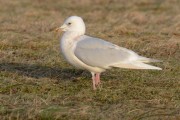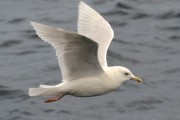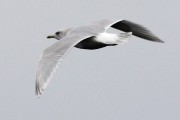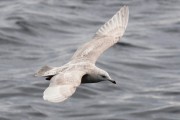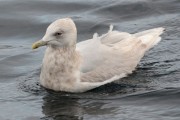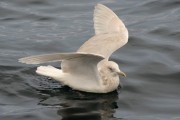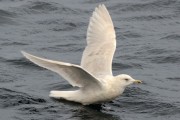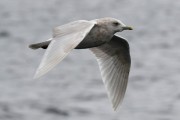Iceland Gull influx in Shetland 2012
Posted by Brydon Thomason on Saturday 21st January 2012 | Birding in Shetland
Arrivals of ‘white-winged’ gulls, namely Iceland and Glaucous, are all but guaranteed in the isles during a Shetland winter. Year on year numbers may however vary considerably, with some years
occasionally recording numbers, of Icelands particularly, reaching up into the early teens on any given day around Lerwick’s harbours. Glaucous gulls too may also on a ‘good year’ be seen in similar numbers but tend to be a little scarcer.
This winter an unprecedented influx of Iceland gulls has undoubtedly taken centre stage amongst the islands ornithologists and has certainly caught the attention of keen-eyed islanders Shetland
wide. Presumably the storm force winds from the north-west straight down from Greenland during the last week of 2011 were responsible for sparking the influx. By the end of the first week of
January numbers of Iceland gulls were clearly rising towards record numbers, which continued to increase as birds which were presumably moving south-east across the North Atlantic drifted in.
This movement was evident elsewhere too with the Faroe Islands also recording exceptionally high numbers and a pattern of their numbers peaking a few days ahead of ours was illustrated by respective arrivals. Throughout many parts of the UK and Ireland the influx continued and was still very much underway at the time of writing.
In conscious bid to record and document such an exceptional event, co-developer (and SN team member) of the Nature-in-Shetland website Rob Fray and others co-ordinated a Shetland wide search for Iceland Gulls. Over 20 observers took part offering quite an extensive coverage of the county which produced a team effort of over 150 birds. Read more about the count and the influx on the Nature in Shetland blog and also joining Nature in Shetland on Facebook is highly recommended as you can receive and follow bird news as well as whale and dolphin sightings as they happen; http://www.facebook.com/natureinshetland
What was quite apparent and unusual right from the first few Iceland’s to arrive was that there were very few first winter (fledged the summer of the same year) birds. Instead the large majority were in fact second winter birds, while numbers of third winter and adult birds were way higher than normal arrivals. But where do all these ‘sub-adults’ usually go and why has this year seen so many arrive? Even in previous ‘big’ years for Iceland gulls adult and sub-adult birds tend to be well in the minority. Perhaps this picture will become clearer in due course or indeed as the influx continues. It may well be simply that they have suffered a very poor breeding season and that the hurricane force winds hailed directly from regions where winter numbers peak, imagine the numbers if first winter birds were statistically similar to previous arrivals!
Amongst these, many individuals showing features of ‘Kumliens type’ Iceland gulls can be identified by keener eyed observers. ‘Kumliens type’ are basically birds that derive from populations in the
Canadian Arctic where Thayer’s gull and Iceland gull’s interbreed, some even class it as a subspecies.
Within those ranges and indeed beyond into neighbouring ones the genes are effectively diluted and many birds may have either or both genes and many without showing any plumage detail to even
speculate as to identification.
These images show variations of individuals showing characteristics of ‘Kumlien’s’. Basically birds showing varying shades of grey along the outer webs of the outermost primaries (cf pure white on
Iceland Gull) which reach and usually hook back inward on the tips would be a good candidate. One well marked contender’s the pattern on the wing tips, with the small white droplets can be quite
distinct as it reduces inward across a few primary feathers. Most Kumien’s also tend to be slightly larger and heavier billed, perhaps not so cute in proportions as Iceland’s and younger birds tend
to show darker and dirtier tones in plumage, especially in their tail and wing covers. But oh what excitement a Thayer’s would bring us…


